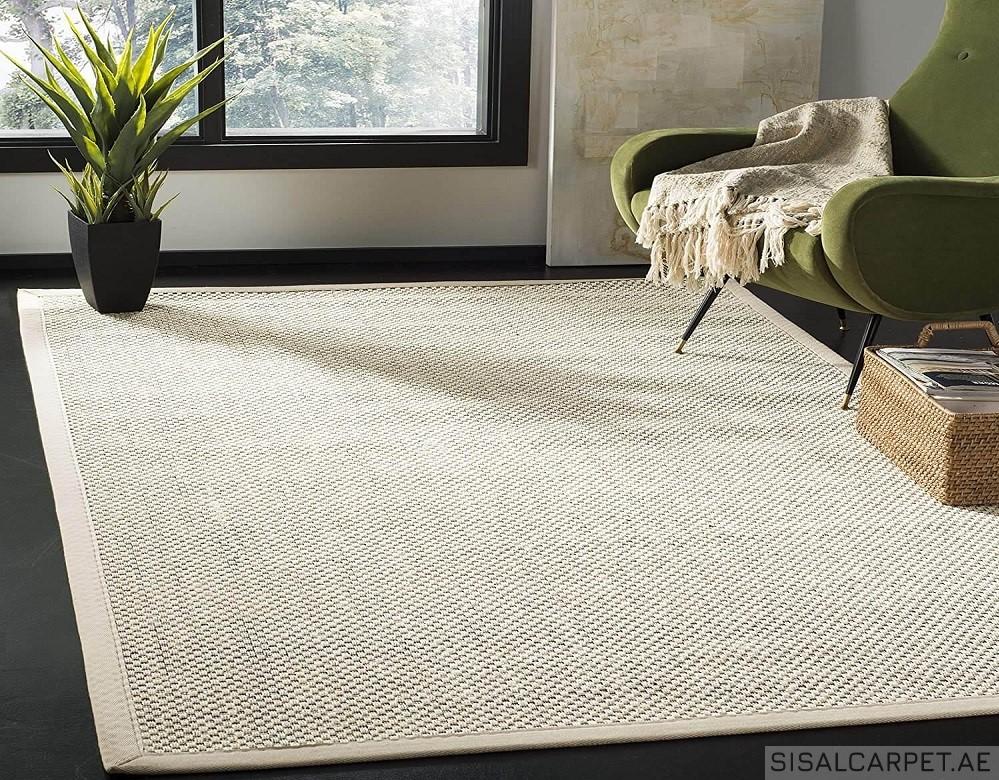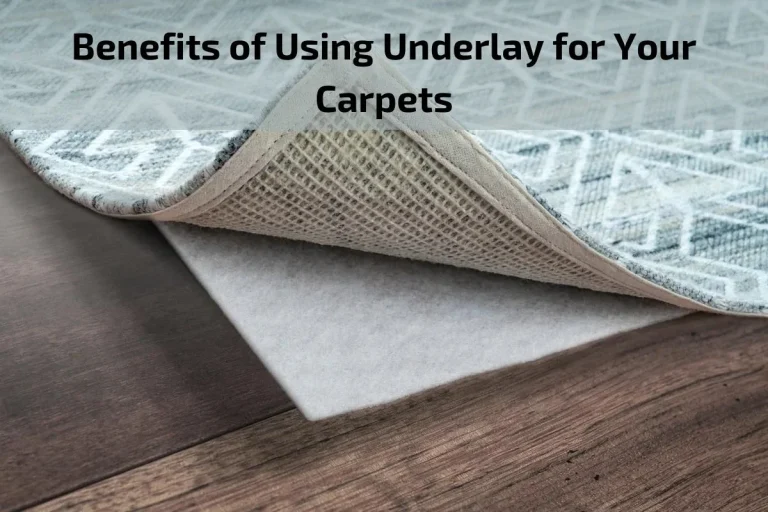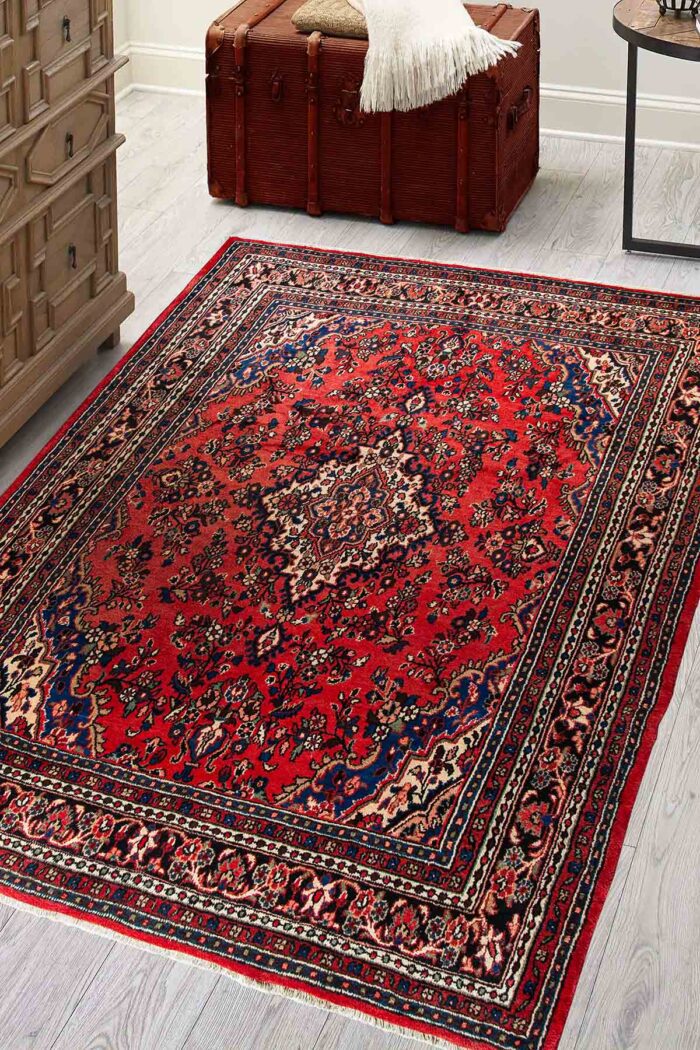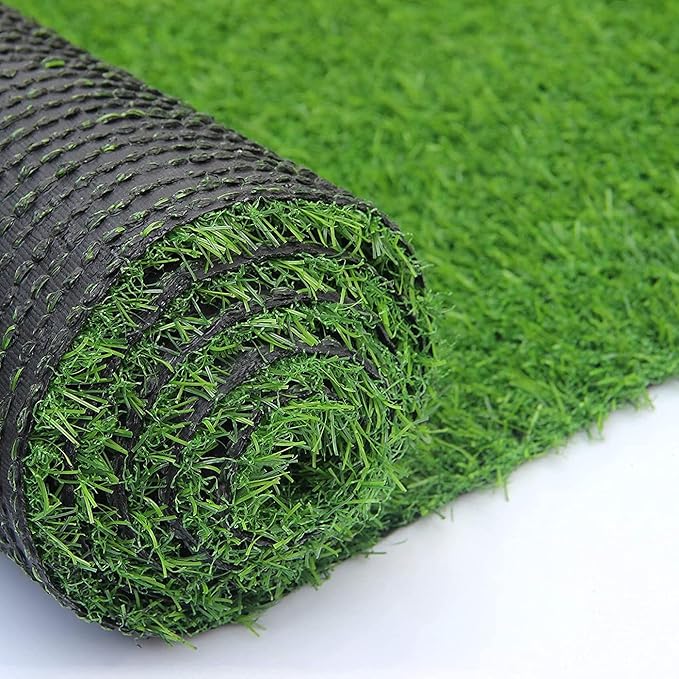Sisal carpets are a popular choice among homeowners looking for a natural and eco-friendly flooring option. However, they are not the only type of natural fiber carpet available. In this blog post, we will compare sisal carpets to other natural fiber carpets, such as jute and seagrass, to help you determine which one is the best fit for your home.
First, let’s discuss sisal carpets. Sisal is a natural fiber derived from the leaves of the Agave sisalana plant. Sisal carpets are known for their durability, natural texture, and eco-friendliness. They are a great option for high-traffic areas, as they are resistant to wear and tear. Sisal carpets also have a natural beauty that can add warmth and character to any space.
Jute carpets, on the other hand, are made from the fibers of the jute plant. They are known for their softness and smooth texture. Jute carpets are often used in bedrooms and other low-traffic areas where comfort is a priority. They are not as durable as sisal carpets and may require more maintenance.
Seagrass carpets are made from the natural fibers of seagrass plants. They have a unique texture and natural color that can add a coastal or beachy feel to any room. Seagrass carpets are also durable and resistant to stains, making them a great option for high-traffic areas. However, they are not as soft as jute carpets and may feel rough underfoot.
When it comes to maintenance, sisal carpets are the easiest to clean. They are naturally stain-resistant and can be cleaned with a simple solution of water and vinegar. Jute carpets are more susceptible to stains and may require professional cleaning. Seagrass carpets are also resistant to stains but may require regular vacuuming to maintain their appearance.
In terms of eco-friendliness, all three types of natural fiber carpets are sustainable options. Sisal and jute are renewable resources that can be grown without the use of pesticides or herbicides. Seagrass is also a sustainable resource that is grown in wetlands without the use of chemicals. When it comes to biodegradability, sisal and jute carpets are fully biodegradable, while seagrass carpets may take longer to break down.
When choosing between sisal, jute, and seagrass carpets, it is important to consider your specific needs and preferences. If you are looking for a durable and low-maintenance option for high-traffic areas, sisal or seagrass may be the best choice. If comfort is a priority, jute may be a better option for low-traffic areas.
It is also important to consider the design style of your space. Sisal carpets are a great option for natural and rustic design schemes, while jute carpets can add a soft and cozy feel to any room. Seagrass carpets are perfect for coastal or beachy design styles.
When it comes to cost, sisal and jute carpets are typically more affordable than seagrass carpets. However, the price can vary depending on the quality and size of the carpet.

Characteristics and Texture of Sisal Carpets
Sisal carpets are known for their distinct texture, natural appearance, and robust feel. The fibers are coarse yet elegant, giving the carpet a rustic charm that synthetic materials cannot replicate. The texture of sisal adds depth and dimension to a room, making it ideal for creating natural, organic interiors.
The natural color of sisal fibers ranges from creamy beige to light brown, though they can also be dyed in various shades to match modern décor trends. Their surface has a slightly rough, tactile feel that contributes to their authenticity and durability.
One of sisal’s defining characteristics is its durability. The fibers are tough and resilient, resisting wear and tear from heavy foot traffic. This makes sisal carpets a perfect choice for hallways, living rooms, and commercial spaces. However, due to their absorbent nature, they are not recommended for humid or wet environments like bathrooms or basements.
Another unique feature is their static-free property, making them suitable for homes with electronic devices. Sisal also acts as a natural insulator, keeping floors cooler in summer and warmer in winter. The combination of texture, strength, and natural beauty makes sisal carpets an elegant, practical flooring solution for eco-friendly design enthusiasts.
Environmental Benefits of Sisal Carpets
Sisal carpets are among the most sustainable flooring options available. Their environmental benefits start at the source—the Agave sisalana plant requires minimal water, no pesticides, and thrives in poor soil conditions. This makes sisal cultivation highly sustainable and eco-friendly.
The production process is low-impact, as it relies on mechanical extraction rather than chemical processing. Additionally, sisal fibers are 100% biodegradable and compostable, meaning they return to the earth at the end of their lifespan without polluting the environment.
Sisal cultivation also benefits rural economies. Many sisal plantations provide employment and income for farmers in developing countries, promoting ethical and sustainable livelihoods.
In interior spaces, sisal carpets contribute to a healthier environment. They emit no volatile organic compounds (VOCs) and are free from synthetic dyes and adhesives. This improves indoor air quality and makes them safe for allergy sufferers and families with children.
Choosing sisal carpets is not just a design decision—it’s a statement of environmental awareness and responsibility. Their natural composition, renewability, and biodegradability make them one of the greenest flooring solutions available today.
Advantages of Sisal Carpets in Home Design
Sisal carpets offer numerous advantages that make them a preferred choice among interior designers and homeowners. Their natural elegance instantly elevates the aesthetic of any space, blending seamlessly with both contemporary and traditional interiors. The neutral tones of sisal complement a wide variety of color palettes and furnishings.
In addition to their beauty, sisal carpets are incredibly durable. They can withstand heavy foot traffic, making them ideal for living rooms, hallways, and offices. Their coarse texture provides a non-slip surface, increasing safety in high-traffic areas.
Sisal also contributes to acoustic comfort. Its dense fibers absorb sound, reducing echo and noise levels in rooms. Moreover, sisal carpets regulate indoor temperatures, keeping spaces cooler during summer and warmer during winter.
Another major advantage is their hypoallergenic nature. Unlike synthetic carpets that trap dust and allergens, sisal naturally repels them, creating a healthier living environment.
Finally, sisal carpets are timeless. Their organic appearance never goes out of style, and their versatility ensures they remain relevant in modern interior design for decades.
Limitations and Challenges of Sisal Carpets
Despite their many advantages, sisal carpets do have some limitations. The most significant is their sensitivity to moisture. Because sisal fibers are highly absorbent, exposure to water can cause staining, warping, or shrinkage. Therefore, they are not suitable for bathrooms, kitchens, or outdoor spaces.
Maintenance is another challenge. Sisal carpets cannot be cleaned with water or steam, as this may damage the fibers. Instead, they require dry cleaning or gentle vacuuming. Spills should be blotted immediately to prevent permanent stains.
Additionally, sisal carpets can feel rough underfoot compared to softer materials like wool or nylon. This texture, while attractive, may not be comfortable for areas where people walk barefoot frequently.
Sisal also tends to fade with prolonged sunlight exposure, so it’s advisable to place them in shaded or low-light areas. Despite these challenges, proper care and strategic placement can significantly extend their lifespan.
Ultimately, understanding these limitations helps homeowners make informed decisions about where and how to use sisal carpets effectively.
Comparing Sisal Carpets with Other Natural Fibers
Sisal carpets are often compared to other natural fiber options like jute, seagrass, and coir. Each has its unique characteristics and suitability.
Sisal vs. Jute: Jute carpets are softer and have a silkier texture but are less durable than sisal. While jute is better suited for low-traffic areas like bedrooms, sisal excels in durability and longevity, making it ideal for busy spaces.
Sisal vs. Seagrass: Seagrass carpets are smoother and more resistant to water, but they come in limited colors. Sisal offers a broader range of shades and textures, providing more design flexibility.
Sisal vs. Coir: Coir, made from coconut husks, is coarser and rougher than sisal. Sisal offers a better balance between comfort and toughness, making it more versatile for residential interiors.
Overall, sisal remains the most durable and aesthetically pleasing among natural fiber carpets. It combines beauty, strength, and sustainability—qualities that few other natural fibers can match.
Sisal Carpet Styles and Patterns
Sisal carpets are available in a wide range of styles, weaves, and patterns, allowing homeowners to personalize their interiors. The most common weaves include herringbone, basket, bouclé, and fine ribbed textures. Each pattern creates a distinct visual effect, from rustic charm to refined elegance.
Modern sisal carpets often blend fibers or incorporate subtle dye variations to create depth and sophistication. Designers frequently use natural tones such as beige, ivory, and taupe, though darker hues or two-tone patterns are increasingly popular for contemporary settings.
The versatility of sisal carpets extends beyond flooring. They can also be used as area rugs, stair runners, or wall-to-wall coverings, adding texture and character to any space.
Whether minimalist or luxurious, sisal carpets provide endless design possibilities, combining timeless natural appeal with modern craftsmanship.
Maintenance and Cleaning Tips
Proper maintenance is key to extending the life of a sisal carpet. Regular vacuuming prevents dust and dirt from embedding in the fibers. Always use a suction-only vacuum—rotating brushes can damage the weave.
When spills occur, blot (never rub) the area immediately with a clean, dry cloth. For stubborn stains, use a dry carpet cleaner or baking soda to absorb moisture. Avoid using water, as sisal fibers can swell and discolor.
It’s also important to maintain stable indoor humidity. Excess humidity may cause the fibers to expand, while dry conditions can make them brittle.
Professional cleaning is recommended once or twice a year to preserve the carpet’s texture and color. With consistent care, sisal carpets can retain their beauty and functionality for many years.
Best Areas to Use Sisal Carpets
Sisal carpets are perfect for dry, high-traffic areas where durability and style are essential. They perform exceptionally well in living rooms, hallways, dining areas, and offices. Their rough texture makes them ideal for spaces that require traction and minimal slipping.
Bedrooms also benefit from sisal’s natural warmth and aesthetic, though an additional rug pad can enhance softness underfoot.
Avoid using sisal carpets in kitchens, bathrooms, or basements where humidity and moisture levels are high. Instead, use them in spaces with controlled indoor climates for maximum longevity.
When used strategically, sisal carpets elevate interiors with their organic charm and timeless sophistication.
The Cost and Value of Sisal Carpets
The cost of sisal carpets varies depending on quality, weave, and brand. Generally, they are more expensive than synthetic options but less costly than high-end wool carpets. However, their durability and eco-friendly nature make them a valuable long-term investment.
Sisal carpets also enhance property value, as natural flooring is highly desirable among eco-conscious buyers. While maintenance requires extra attention, their lifespan and timeless design justify the cost.
Moreover, investing in sisal supports sustainable industries and ethical production practices—adding not only aesthetic but moral value to your home.
Sisal Carpets in Modern Interior Design
In contemporary interior design, sisal carpets have become a symbol of eco-luxury. Designers value them for their texture, sustainability, and ability to create calm, grounded spaces.
Sisal carpets pair beautifully with minimalist furniture, natural wood, and neutral color schemes. They add tactile warmth to spaces dominated by metal, glass, or concrete.
In commercial interiors, sisal creates a professional yet inviting ambiance. Its understated elegance fits offices, hotels, and boutiques looking for a sustainable design statement.
By merging natural aesthetics with modern functionality, sisal carpets continue to shape the future of interior design worldwide.
Conclusion
Sisal carpets represent the perfect harmony between nature, craftsmanship, and sustainability. Made from renewable plant fibers, they embody strength, style, and environmental consciousness. While they require special care and thoughtful placement, their beauty and durability make them a lasting investment.
From rustic homes to modern offices, sisal carpets bring a sense of warmth, texture, and authenticity that few materials can match. As sustainability and natural design become increasingly important, sisal carpets remain one of the most elegant and responsible choices for flooring in today’s eco-conscious world.
The most important frequently asked questions about Sisal Carpets
Where does sisal come from?
It is mainly produced in countries like Brazil, Kenya, and Mexico.
Is sisal carpet durable?
Yes, it’s extremely strong and long-lasting, especially in high-traffic areas.
Can sisal carpets be used in homes?
Yes, they are ideal for living rooms, hallways, and stairs.
Can sisal carpet be used outdoors?
No, it’s not suitable for outdoor use because moisture can damage it.






